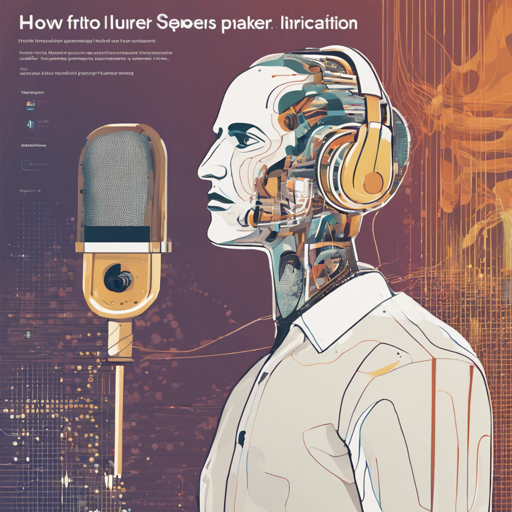Have you ever wondered how machines can identify different speakers just from their voices? Thanks to advancements in deep learning, we now have models like Hubert-Large specifically designed for speaker identification. In this blog, we’ll take you through the step-by-step process of using Hubert-Large for Speaker Identification with ease. Let’s dive in!
Model Description
Hubert-Large is a ported version of the S3PRL’s Hubert for the SUPERB Speaker Identification task. This model is based on the hubert-large-ll60k, which has been pretrained on 16kHz sampled speech audio. When utilizing this model, ensure that your speech input is also in 16kHz format. For additional insights, refer to the SUPERB: Speech processing Universal PERformance Benchmark.
Task and Dataset Description
Speaker Identification (SI) categorizes each spoken utterance according to the speaker’s identity in a multi-class classification setting. For both training and testing, speakers belong to a predefined set. This model predominantly uses the VoxCeleb1 dataset. To learn more about the original model’s training and evaluation instructions, visit the S3PRL downstream task README.
Usage Examples
You can easily utilize the Hubert-Large model via the Audio Classification pipeline in Python. Here’s how:
Using the Audio Classification Pipeline
Begin by loading the necessary libraries and dataset:
python
from datasets import load_dataset
from transformers import pipeline
dataset = load_dataset('anton-lsuperb_demo', 'si', split='test')
classifier = pipeline('audio-classification', model='superb/hubert-large-superb-sid')
labels = classifier(dataset[0]['file'], top_k=5)
Using the Model Directly
If you prefer a more step-by-step approach, here’s how you can work directly with the model:
python
import torch
import librosa
from datasets import load_dataset
from transformers import HubertForSequenceClassification, Wav2Vec2FeatureExtractor
def map_to_array(example):
speech, _ = librosa.load(example['file'], sr=16000, mono=True)
example['speech'] = speech
return example
# Load a demo dataset and read audio files
dataset = load_dataset('anton-lsuperb_demo', 'si', split='test')
dataset = dataset.map(map_to_array)
model = HubertForSequenceClassification.from_pretrained('superb/hubert-large-superb-sid')
feature_extractor = Wav2Vec2FeatureExtractor.from_pretrained('superb/hubert-large-superb-sid')
# Compute attention masks and normalize the waveform if needed
inputs = feature_extractor(dataset[:2]['speech'], sampling_rate=16000, padding=True, return_tensors='pt')
logits = model(**inputs).logits
predicted_ids = torch.argmax(logits, dim=-1)
labels = [model.config.id2label[_id] for _id in predicted_ids.tolist()]
Understanding the Code: An Analogy
Think of this process as conducting an orchestra. The dataset acts as the music sheets that guide the orchestra (the model) on what notes to play (how to predict speaker identity). Each musician (the different parts of the code) has a unique role: loading the dataset, processing the audio, and finally, making those beautiful predictions. Just like each musician needs to be in sync, the different parts of the code need to function smoothly together to produce accurate results!
Eval Results
Upon evaluation, both the S3PRL and transformers yield an impressive accuracy score of approximately 0.9033 and 0.9035 on the test set, respectively.
Troubleshooting Tips
- Make sure your audio files are in 16kHz sample rate, as different rates can lead to unsatisfactory results.
- If you encounter out-of-memory errors, consider reducing the batch size you are working with.
- Ensure all libraries are properly installed and up to date. Using virtual environments can help manage dependencies.
- When loading datasets, ensure your file paths are correct and accessible.
- For more insights, updates, or to collaborate on AI development projects, stay connected with fxis.ai.
At fxis.ai, we believe that such advancements are crucial for the future of AI, as they enable more comprehensive and effective solutions. Our team is continually exploring new methodologies to push the envelope in artificial intelligence, ensuring that our clients benefit from the latest technological innovations.

